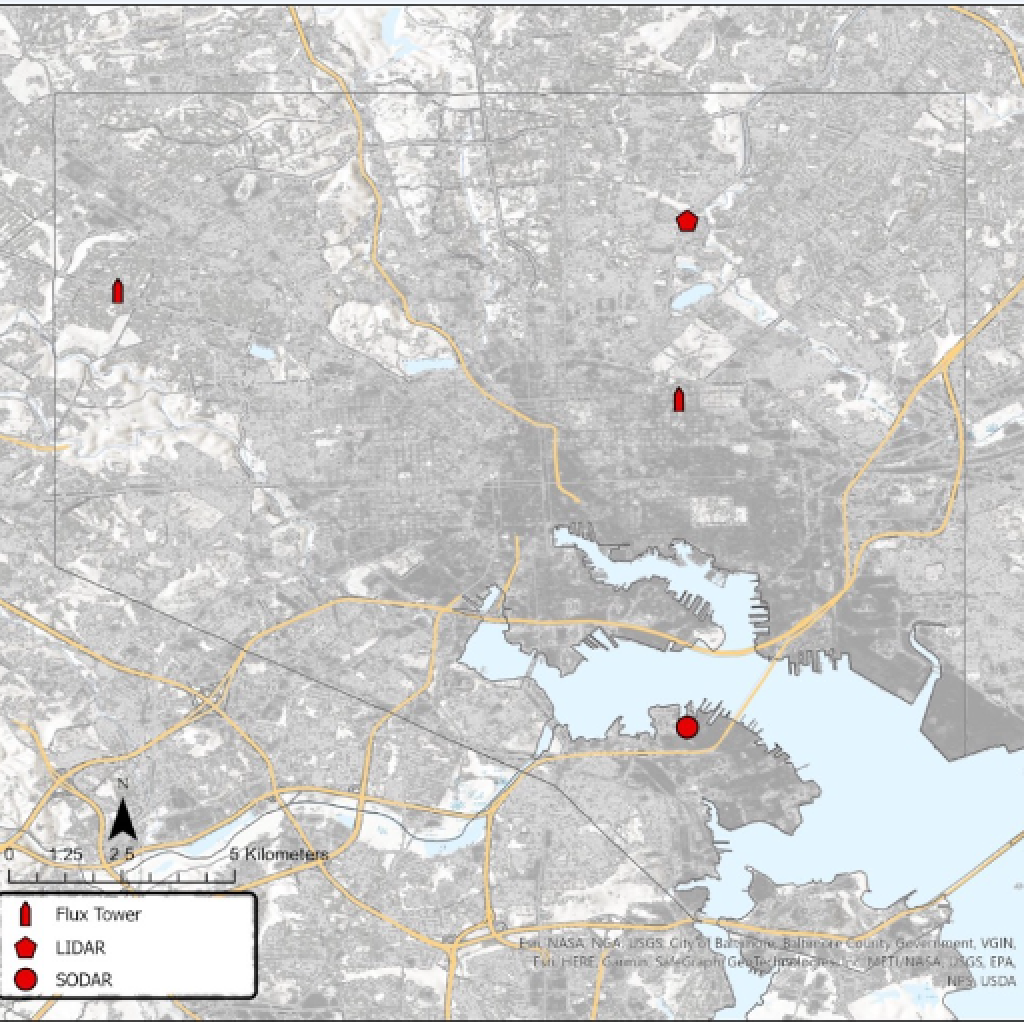What does a flux tower measure and why is it important?

Flux towers measure the interaction between the earth’s surface and the lowest layers of the atmosphere to help scientists understand the climate and air quality conditions in Baltimore. We will measure two kinds of interactions, called “fluxes.” Momentum flux occurs when trees, buildings and other items on the earth’s surface slow the wind and create turbulent mixing of air. (The wind also very slightly adds momentum to the earth.) Energy flux occurs with the daily heating and cooling of the earth’s surface. (Read a deeper dive into flux.)
How does a flux tower make measurements?
Each flux tower has three pieces of equipment on the flux towers. A radiation sensor measures infrared radiation and solar radiation traveling toward and away from the earth. A sonic anemometer uses sound to measure winds in three directions (up-down, east-west, north-south). From this the momentum flux can be computed. The sonic anemometer also measures air temperature. When combined with data from a water vapor sensor, these data can be used to compute the rate of heating or cooling of air by the ground, and the rate of evaporation of water vapor into the atmosphere.
Where are the BSEC flux towers located?
BSEC has two flux towers in Baltimore City, one located in Broadway East and one located in Howard Park/Gwynn Oak in Northwest Baltimore.


